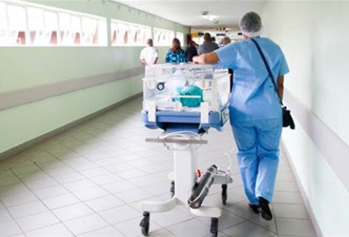Acer used a New York press conference last week to unveil more than 40 new products, as it seeks to move from "stabilisation mode" and back to growth.
Chief executive Jason Chen, who joined Acer on 1 January 2014 after a period marked by management restructuring and poor performances, gave a bullish presentation to an audience of more than 300 of the world's tech press at the Next@Acer event.
Chen said that for Acer, the strategy is now about moving "from turnaround to pursuing excellence".
He wants to company to be "the last man standing" in the PC sector, although admitting it won’t be an easy task with all five major vendors in the sector proving to be "survivors".
Acer recently revealed its financial performance for the full year ending 31 December, with a 28.3 percent rise in profit but an 8.5 percent fall in revenue. According to a company statement, this was evidence Acer "has steadily turned its operations around".
The vendor currently has the fourth spot in the worldwide PC market, according to the latest IDC figures, with a 7.1 percent share. This is behind market leader Lenovo (19.6 percent), HP (19 percent) and Dell (13.5 percent) and ahead of Asus (7 percent).
Speaking to CRN Australia, pan-Asia Pacific president Oliver Ahrens said position isn't the focus - market share is. "I am perfectly fine with position No.4 if it means 22 percent market share."
Acer currently has roughly 8 percent share in Asia-Pacific. "That bothers me," Ahrens added.
Market conditions won’t make it easy for Acer, or any PC maker, to gain ground in the year ahead, with the high foreign exchange rate dulling consumer sentiment, and the coming Windows 10 launch set to bring disruption before, hopefully, providing an upturn in PC sales.
"Operating system change is always disrupting. As good as Windows 10 is and as good as it is for the industry that it is coming, it is disrupting," he said.
Ahrens said the Acer Australia team had done a "fabulous" job of positioning Acer in line with the market. "The average price of Acer is the same as the average price of the PC market."
But the company will need commercial IT resellers to help it carve out more share, said Ahrens. "We need more channel business. We need more channel programs in Australia. We have to get the channel programs, the strategy. This is a deficit. As a brand, we need to have the SMB commercial channel that goes via distribution and channel programs and there we have a deficit."
"We have very high focus on retail and on tenders, especially education tenders. What is missing is the SMB business."
Next: Bright spots on PC market








_(11).jpg&h=142&w=230&c=1&s=1)

.jpg&w=100&c=1&s=0)
_(8).jpg&w=100&c=1&s=0)







.jpg&q=95&h=298&w=480&c=1&s=1)





